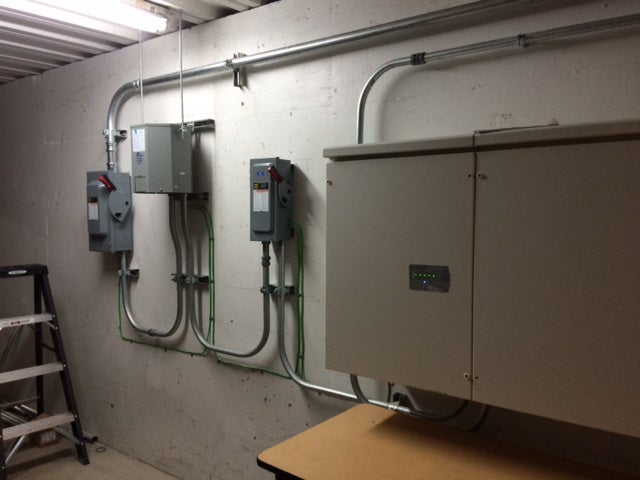Bringing renewable energy to market

Our electric system is undergoing a fundamental transition. The increasing adoption of distributed energy resources (DERs) such as solar and battery storage enables homeowners and businesses to take control of where their electricity comes from. More than that, adoption of DERs empowers them to provide benefits to the wider electric grid. A new ruling from the Federal Energy Regulator Commission (FERC) could enable those who have storage to receive compensation for these benefits.
FERC approved Order 841 by unanimous vote in mid-February. It directs grid operators to develop rules for energy storage to participate in the wholesale energy, capacity and ancillary services markets. Grid operators, known as Regional Transmission Organizations (RTOs) and Independent System Operators (ISOs), are responsible for ensuring there is sufficient electricity generated in their territory to meet customer demand. They do so by operating energy markets. FERC’s ruling should mean that distributed energy resources, like solar and storage, can generate more than one revenue stream by offering stored energy to the wholesale market in several different ways.
Energy markets are just that: energy that is now being provided to the grid in real time. Capacity markets, however, offer the possibility of compensation for potentially providing power to the grid at some point in the future when it may be needed. Traditionally, ancillary services, which help stabilize the grid and thus enhance reliability and the quality of energy, have been provided by such devices as voltage regulators. However, inverters installed with rooftop solar systems and other DERs can provide many of these same ancillary services. Under FERC’s order, a renewable energy storage resource can potentially generate revenue from any or all three of these wholesale markets.
But there’s a catch. The minimum limit currently allowed by regional grid operators (the RTOs and ISOs) for storage resources to participate in their markets is 100 kW. For comparison, a rooftop solar system is generally less than 10 kW. FERC’s order proposed that small DERs might combine (or “aggregate”) to be collectively greater than the 100 kW limit, and thus participate. However, FERC failed to finalize this aspect of its ruling. This issue will be addressed in a future proceeding of the commission.
“Allowing DERs like community solar to participate in the wholesale markets… helps ensure the markets are selling services at competitive prices, which benefits customers,” said Jennifer Chen, an Attorney for the Sustainable FERC Project at the Natural Resources Defense Council. “The DERs, meanwhile, benefit from a revenue stream from the wholesale markets for services provided at wholesale, separate from services they provide at the retail level or to the customer directly. This enables DERs to more fully realize the potential value they can provide to the grid and get paid for it.”
Chen provided an example of what could happen if DERs are not allowed to fully participate.
“DERs could help supply energy through the wholesale markets at peak demand times, but peak demand on the transmission grid does not necessarily occur at the same time as peak demand on the distribution grid,” Chen said. High voltage transmission lines carry power from sources like power plants to demand centers; distribution lines connect individual customers. If DERs can’t compete in the wholesale market, they can help satisfy peak demand only on the distribution grid, not the transmission grid. This restriction would also deny DERs the additional wholesale income.
“Aggregation is typically a service provided by the third-party aggregator in exchange for a percentage of the revenue, to group together smaller distributed energy resources to allow them to participate in the markets as one resource,” Chen said. What the third-party aggregator provides to these resource owners is education and the ability to carry out all the steps necessary for them to participate.
Chen pointed out that DERs in wholesale markets have an added value: they can help preserve the reliability of the grid. They provide regional grid operators greater visibility as to the location of such resources on the system, which can help them to plan better and to deploy resources in the event of a transmission system outage. DERs are often situated closer to the customer, so they can help keep the lights on if there’s a problem with the transmission system. DERs can also provide services to stabilize the grid – which must be maintained at a certain frequency and voltage – faster and more accurately than conventional power plants.
FERC’s decision has prompted a backlash from several utilities and one ISO. They are seeking to modify or limit FERC’s order. The utility Xcel Energy has even questioned the commission’s right to issue the order. It argues that the distribution system is properly under the jurisdiction of the states, not of a federal entity like FERC. It is clear that utilities feel threatened by the possibility of renewable energy entities entering into competition with them.
FERC is scheduled to hold a conference on the issue of aggregation of smaller distributed energy resources in mid-April.
